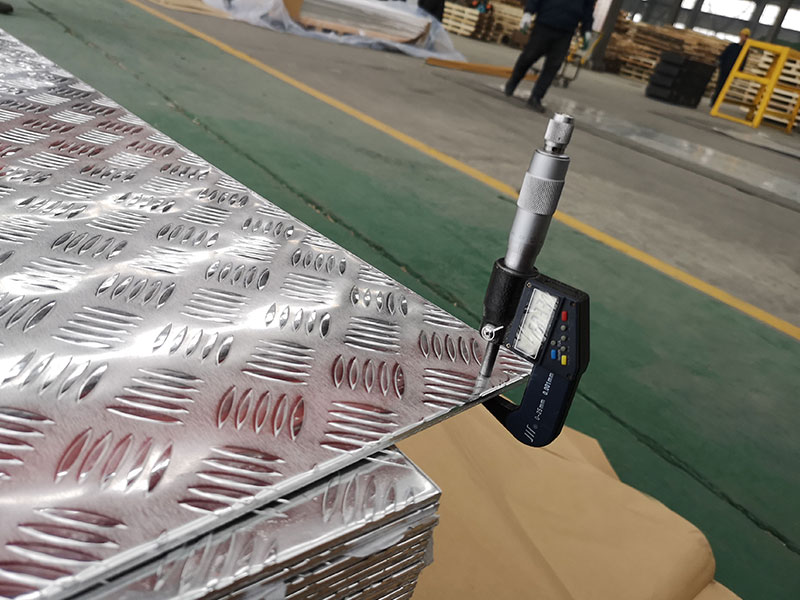Marine Grade Aluminium Sheets 5083 H111 H116
When it comes to marine applications, materials must punch above their weight. The salty spray, relentless waves, and constant exposure to corrosive environments demand exceptional durability and integrity. Among the metals trusted by shipbuilders, engineers, and marine craftsmen worldwide, Marine Grade Aluminium—particularly Alloy 5083 with temper H111 and H116—stands out as a paragon of strength, corrosion resistance, and workability.
Why Aluminium 5083 Holds the Helm in Marine Environments
Aluminium alloy 5083 is famously dubbed one of the strongest non-heat-treatable alloys available, boasting remarkable corrosion resistance, especially in extreme environments like the ocean. This multi-element aluminum-magnesium alloy features magnesium content around 4.0–4.9%, copper below 0.1%, manganese roughly between 0.3–1.0%, and traces of chromium and iron. The robust chemical makeup allows it to withstand marine conditions that would corrode or weaken many common materials.
Corrosion Resistance:The ocean is harsh, full of chlorides that typically promote pitting and crevice corrosion. 5083 alloy’s high magnesium content imparts excellent resistance to such phenomena. Unlike steel, no special coatings are truly indispensable to maintain integrity, significantly reducing maintenance overhead.
Mechanical Strength:Its tensile strength ranges between 275 MPa to 340 MPa depending on temper, providing intense durability without excessive weight. This alloy masterpiece strikes the optimal balance of toughness and lightness—a boon for accelerating vessels or floating platforms.
Deciphering the Temper Codes: H111 vs. H116
The suffixes H111 and H116 refer to specific tempering choices that refine mechanical and corrosion properties tailored to marine use.
| Property | H111 | H116 |
|---|---|---|
| Temper description | Strain hardened slightly to increase strength compared to annealed state | Strain hardened with improved corrosion resistance, especially exfoliation and intergranular corrosion |
| Typical tensile strength | Approximately 275-315 MPa | Approximately 300-340 MPa |
| Corrosion resistance | Good | Superior |
| Suitable applications | Marine sheets for less corrosive saltwater behavior or more formability | Marine plates exposed to severe offshore conditions, hull construction and structural components |
The H111 temper offers a general-purpose solution where moderate corrosion resistance and easier formability are desired, such as smaller structural components, trailer beds, or cabin shells. It has somewhat higher ductility to facilitate bending or rolling. By contrast, H116 is purposely processed and tested under ASTM B928 Marine standards to resist exfoliation and intergranular corrosion, crucial for offshore oil rigs and vessel hull plating continuously splashed or immersed in seawater.
| Parameter | Unit | 5083-H111 | 5083-H116 |
|---|---|---|---|
| Magnesium (Mg) | % | 4.0 – 4.9 | 4.0 – 4.9 |
| Copper (Cu) | % | ≤0.1 | ≤0.1 |
| Manganese (Mn) | % | 0.3 – 1.0 | 0.3 – 1.0 |
| Chromium (Cr) | % | 0.05 – 0.25 | 0.05 – 0.25 |
| Tensile Strength (min) | MPa | 270 – 310 | 300 – 340 |
| Yield Strength (min) | MPa | ~145 | ~175 |
| Elongation (%) | % | 10 – 18 | 12 – 16 |
| Density | g/cm³ | ~2.66 | ~2.66 |
| Thermal Conductivity | W/m·K | ~121 | ~121 |
| Typical Thickness Range | mm | 1.6 – 250 | 1.6 – 250 |
Meeting Standards: Assurance in Material Quality
Both H111 and H116 tempers comply with widely accepted standards such as:
- ASTM B928 – Specification particularly defining marine aluminum alloys focusing on corrosion resistance benchmarks.
- ISO 6361-1 – Specification for wrought aluminium and aluminium alloy sheets and plates, including tempers.
- EN 485-2 – European standards detailing mechanical properties for wrought aluminum products.
Marine manufacturers rely on these characterizations to confidently integrate 5083 sheets, assured that performance matches hold under real-world ocean forces.
Practical Applications: Beyond the Names
Where the salty wind roars and harsh waves roam, Aluminium 5083 pairs resilience with lightweight agility.
- Hull Plates and Structural Framework: The ultrahigh corrosion resistance of H116 saves substantial repair costs and provides safety to seafaring vessels from pleasure crafts to patrol boats.
- Decks and Superstructure Panels: The greater formability of H111 allows easier shaping while still ensuring solid resistance, perfect for mid-tier exposed surfaces.
- Oil and Gas Offshore Structures: Platforms located in deepwater prone to highly aggressive marine environments benefit from H116 temper.
- Cryogenic Tanks and Storage: This alloy’s low-temperature toughness also makes it an excellent choice for liquefied natural gas (LNG) carriers and tanks.
The Bottom Line: Navigating Forwards with Confidence
Choosing between 5083 H111 and H116 depends on the ultimate application demands—does the structure endure continuous corrosive exposure or mild environments requiring simpler fabrication? The marine industry leans heavily on these specialized tempers precisely because the alloy aligns strength, formability, and corrosion resistance so impeccably.
Above all, Marine Grade Aluminium Sheets 5083 H111 and H116 remain underrated heroes, quietly battling nature’s elemental forces while underpinning humanity’s longing to explore and thrive in the oceans.
If your project sails into maritime waters demanding materials that blend ruggedness with reliability, 5083 alloy, optimized by H111 or H116 temper, might just anchor your success.
About the Author:An expert specializing in aluminum alloys, with decades consulting on marine and industrial specification, sharing insights to bridge material performance with practical applications.
https://www.alusheets.com/a/marine-grade-aluminium-sheets-5083-h111-h116.html


